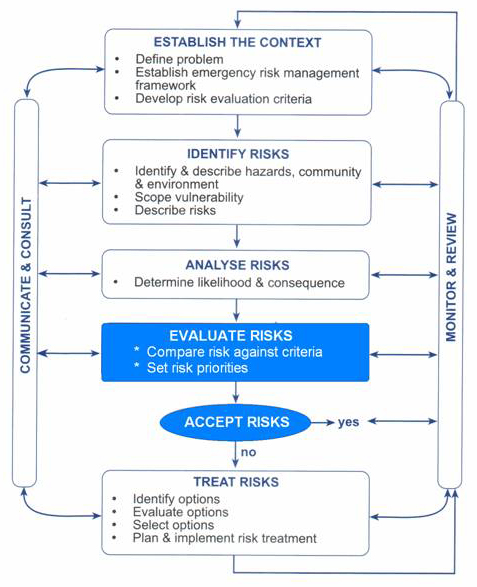Topic 8: Risk evaluation and prioritization
Overview
Risk evaluation relates to activities:
- the comparison of risks against the criteria developed during the establishment of the context in the first stage of the emergency risk management process
- the prioritisation of risks for further action; and
- identification of acceptable risks
Prioritisation, otherwise known as 'ranking', is a method of determining the perceived relative degree of importance of similar things. In risk assessment, prioritisation is used to determine the perceived relative degree of importance of risks. This allows resources to be appropriately allocated to those risks and associated hazards that are likely to cause the greatest degree of harm. In this topic we will examine three prioritisation techniques in detail, and work through an example of their use.
Figure 8.1 shows the location of risk evaluation within the emergency risk management process.

Figure 8.1
Emergency Risk Management Process
Source: Emergency Management Australia, 2000, Emergency risk management: Applications guide, EMA, Canberra.
Learning outcomes
After completing the work for this topic, you should be able to:
- explain the process of evaluating risks;
- explain why there is the need to prioritise hazards and risks, and the steps necessary to establish such priorities;
- prioritise risks based on the results of a description of hazards and the community, and the likely effects of those hazards, using a number of prioritisation techniques;
- explain the process of identifying acceptable risks; and
- identify acceptable risks within your risk assessment project.